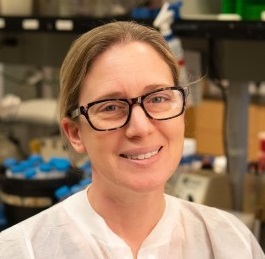Peer Reviewed Orthopaedic
Seeking Multimodal Vaccines to Eradicate Biofilm-Associated Microorganisms Following Traumatic Musculoskeletal Injury



Posted June 5, 2020
* Mark Shirtliff, Ph.D., and Janette Harro, Ph.D., University of Maryland, Baltimore


Advances in protective gear have dramatically increased the survival rates for Soldiers injured during battle, but increased survival results in higher numbers of personnel enduring life with traumatic musculoskeletal injuries. Subsequently, many wounded warriors require orthopaedic devices, often surgically integrated within their major extremities. A common issue in recovery from traumatic injury is the development of bacterial infections, resulting directly from the injury or as a product of surgery to implant orthopaedic devices. These infections can become a persistent issue due to a unique growth pattern, called a biofilm, which affords the bacterium important survival advantages. A biofilm forms when microorganisms, such as Staphylococcus aureus (S. aureus), adhere to an available surface and surround themselves with a matrix of biological material. Indwelling orthopaedic devices present optimal surfaces for the development of these matrices, which shields S. aureus from normal immune surveillance and antibiotic therapies. Studies have revealed that biofilms produce unique protein signatures relative to their planktonic, or free-living, counterparts and that individual biofilm proteins can generate an expected humoral immune response. This data suggests that vaccine-based priming of a wounded individual’s immune system, against infectious agents, could potentially help to clear these infections, and avoid additional surgeries as a consequence of failed antibiotic therapy.
With a Fiscal Year 2014 Peer Reviewed Orthopaedic Research Program (PRORP) Idea Development Award, Dr. Mark Shirtliff and Dr. Janette Harro, at the University of Maryland, Baltimore, set out to investigate biofilm-specific vulnerabilities and develop a vaccine to eliminate the incidence and persistence of these infections. As documented in their recent publication in Infection and Immunity, the group built on their earlier work, which described the development of a quadrivalent vaccine that targets four unique biofilm proteins from S. aureus. In this new work, the Shirtliff/Harro team created a novel pentavalent vaccine, which combined their previous vaccine with an additional immunizing agent that specifically targets the planktonic form of S. aureus. The rationale for this approach stemmed from the hypothesis that the quadrivalent vaccine did not affect planktonic S. aureus levels, thus allowing for a persistent infection.
Administration of the new pentavalent vaccine initially provided mice with a significant reduction in mortality relative to controls when challenged with an S. aureus infection, and 66.7% of these surviving mice demonstrated no evidence of infection at the injection site. The pentavalent vaccine also provided dramatic improvement in survival when compared to either the quadrivalent or planktonic protein alone after a very high dose of S. aureus. Mice inoculated with the pentavalent vaccine had a survival rate of 62.5% versus 12.5% for all other groups after 21 days. The group then tested their pentavalent vaccine in a rabbit model of osteomyelitis, a bone pathology caused by S. aureus infection, and found that 62.5% of the vaccinated animals were able to clear S. aureus infection relative to 0% of the control-treated group. Further, radiographic analysis revealed that vaccinated animals had much less severe osteomyelitis than controls and the group that cleared their infections had the least severe bone pathology. Finally, the research determined that these improvements in the context of infection were a definitive result of the immune response generated by vaccination, as simply dosing mice with the antibodies generated against these five S. aureus proteins significantly enhanced overall survival and bacterial clearance relative to controls.
The important advances generated by the team of Dr. Shirtliff and Dr. Harro suggests the need to translate their vaccine into human trials to expedite the potential benefits to wounded warriors. The group’s work, supported by the PRORP, has produced multiple U.S. and international patents, and has generated the interest of the press, as evidenced by their recent interview for the podcast The Naked Scientists.† This work also suggests that other major pathogens capable of establishing biofilms, such as Pseudomonas aeruginosa and Klebsiella pneumonia, could potentially be targeted in a similar fashion, to clear infection and potentially reduce dependency on antibiotics.
*The scientific community mourned Dr. Shirtliff’s untimely passing in 2018. The completion of this important work was overseen by his long-time colleague, Dr. Janette Harro.
Publication:
Harro JM, Achermann Y, Freiberg JA, et al. 2019. Clearance of Staphylococcus aureus from in vivo models of chronic infection by immunization requires both planktonic and biofilm antigens. Infection and Immunity 88(1):e00586-19.
Links:
†https://www.thenakedscientists.com/podcasts/short/staphylococcus-aureus-biofilm-vaccine
Last updated Friday, March 7, 2025














